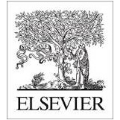Advances in neural imaging have enabled neuroscience to study how the joint activity of large neural populations conspire to produce perception, behavior and cognition. Despite many advances in optical methods, there exists a fundamental tradeoff between imaging speed, field of view, and resolution that limits the scope of neural imaging, especially for the raster-scanning multi-photon imaging needed for imaging deeper into the brain. One approach to overcoming this trade-off is in computational imaging: the co-development of optics and algorithms where the optics are designed to encode the target images into fewer measurements that are faster to acquire, and the algorithms compensate by inverting the optical image coding process to recover a larger or higher resolution image. We present here one such approach for raster-scanning two-photon imaging: Neuroimaging with Oblong Random Acquisition (NORA). NORA quickly acquires each frame in a microscopic video by subsampling only a fraction of the fast scanning lines, ignoring large portions of each frame. NORA mitigates the information loss by extending the point-spread function in the slow-scan direction to integrate the fluorescence of neighboring lines into a single set of measurements. By imaging different, randomly selected, lines at each frame, NORA diversifies the information collected across frames and enables video-level reconstruction. Rather than reconstruct the video frame-by-frame using image-level recovery, NORA recovers full video sequences through a nuclear-norm minimization (i.e., matrix completion) on the pixels-by-time matrix. We simulated NORA imaging using the Neural Anatomy and Optical Microscopy (NAOMi) biophysical simulation suite. Using these simulations we demonstrate that NORA imaging can accurately recover 400 um X 400 um fields of view at subsampling rates up to 20X, despite realistic noise and motion conditions.
翻译:暂无翻译





